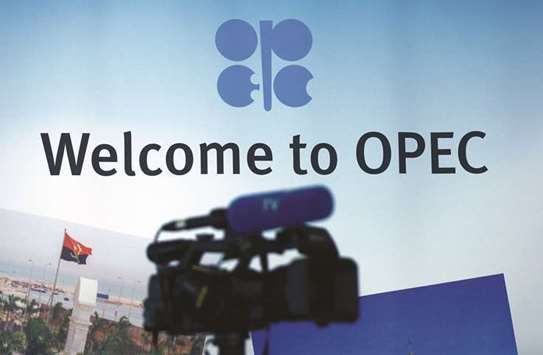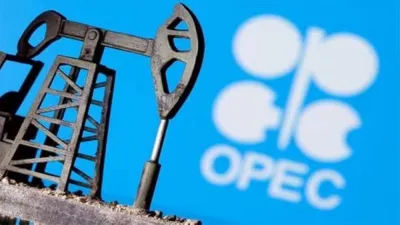As the oil market responds sceptically to Opec’s output-cut deal, Goldman Sachs Group says the group has some challenges to tackle.
The organisation will face the test of defending market share and generating revenue growth as it transitions from the curbs, the bank said in a May 25 report. Additionally, backwardation – when near-term crude prices are higher than those for later months – will be needed for the cuts to achieve their goal of shrinking an oil inventory glut, and prevent an “unbridled” increase in US shale production, according to Goldman.
“Opec needs to create a credible threat that the oil market may return into surplus to finally slow the capital inflows into shale,” analysts including Damien Courvalin wrote. “This could be achieved by both expressing the goal of growing future production, and gradually ramping up production to grow market share but keep stocks stable and backwardation in place.”
Crude prices tumbled the most in three weeks last Thursday after the Organization of Petroleum Exporting Countries and its allies decided to prolong their curbs through the end of March. The negative reaction was driven by the lack of greater cuts, an absence of caps on supplies from Libya and Nigeria that are still exempt from the deal, and no “clear exit strategy,” according to Goldman. Moreover, refiners in Asia, the world’s biggest oil market, are warning that Opec may lose market share because of the reductions.
“There’s a high chance that Opec’s market share may fall,” said Kim Wookyung, a spokeswoman at SK Innovation Co, South Korea’s biggest processor. “We may reduce purchases from Opec members, while increasing shipments from regions like Africa and Europe. For US crude, we are still looking to see whether it’s economically feasible.”
Indeed, non-Opec nations including the US, Brazil and Canada that are not part of the output-cut pact will increase production in the mid-and long-term, offsetting and outstripping supply curbs by others, according to Guo Chaohui, analyst at Beijing-based China International Capital Corp
“We have refineries that can process crude from the US, we are buying from Canada, Russia, Latin American and African countries and also Far Eastern suppliers,” said B Ashok, chairman of Indian Oil Corp, the nation’s biggest refiner. “So we do not think this is going to impact our supplies,” he said, referring to Opec’s output reductions.
Still, Goldman expressed optimism. The bank’s supply-demand projections signal that the 9-month extension in production curbs will achieve “a normalization in OECD inventories by early 2018, even with gradually declining compliance,” Courvalin wrote in the report. Its second-half 2017 spot price forecast for Brent crude, the benchmark for more than half the world’s oil, remains at $57 a barrel.
A surge in US production, aided by activity in shale fields, has raised concern that the curbs by Opec and its partners will be undermined. Sustained backwardation in the oil market will be key to restraining shale growth because it would limit access to “large pools” of private equity and credit capital, according to Goldman.
While the bank predicts Opec’s cuts will generate backwardation by normalising inventories, the oil market is currently in contango, when later prices are higher than near-term levels. The cost of prompt-loading WTI crude is about $1 a barrel lower than supplies loading six months later. The discount widened to more than $8 a barrel in February 2016, the most in almost a year, amid a glut as Opec pumped at will to defend market share from rivals including US shale producers.

A TV camera is seen inside the headquarters of the Organization of the Petroleum Exporting Countries (Opec) in Vienna on May 24. The organisation will face the test of defending market share and generating revenue growth as it transitions from the curbs, Goldman Sachs said in a May 25 report.


